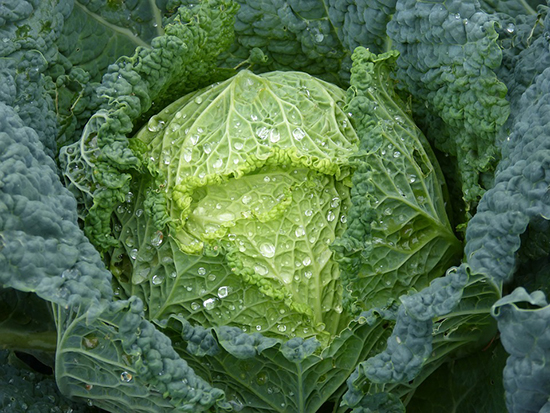Called Cabbage Loopers, the larva of this caterpillar actually enjoys feasting on cabbage, broccoli, brussels sprouts, cauliflower, kale, collards, etc.—as well as lettuce, spinach, beans, peas, celery, parsley, parsnips, radishes, potatoes, and tomatoes.
Large holes will appear in cabbage and lettuce leaves as the larva make their way into the center of the head from the base. Looper larvae are easy to spot by their method of locomotion which involves an undulating movement that makes the worms look as if they are looping over.
Mature vegetable plants can take some damage from loopers without suffering too much, but you’ll doubtless want to limit their survival. Luckily, since they are on your edibles, taking care of the problem can be easily done without pesticides.
Check your vegetables often so that at the first sign of loopers you can remove them by hand.
If you miss this first stage and need to attack the problem head-on (no pun intended), use Bonide Thuricide. Thuricide is a beneficial bacterium, Bacillus thuringiensis, shown to be a great control for caterpillars. Although Thuricide is completely natural and safe for humans and pets, be careful in its use as it will also attack non-harmful butterfly and moth larva. Other worms may actually be at work on your vegetables, but don’t worry too much about specific identification as the same methods for removal works on all of them!

